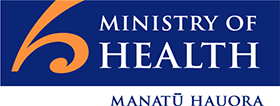New Zealanders receive healthcare through a mixture of public and privately-funded services. The public healthcare system is mainly funded through general taxation.
In 2007, total health expenditure (public and private) was worth $16.2 billion (Source: Ministry of Health). Publicly-funded healthcare represented a 79.2 percent share of this total, with private healthcare holding a share of 20.8 percent.
Total health expenditure in 2007 represented 9.1 percent of GDP which is the same as the OECD weighted average. New Zealand public health spending currently represents around 7 percent of GDP. Treasury estimates this amount will double by 2050 unless steps are taken to curb the increase.
In May 2010, Vote Health received an increase of $512 million but it is only marginally above the level health officials calculate is necessary to keep up with inflation and population growth. So, public health providers are being told to tighten their belts and increase efficiencies. Vote Health for 2010/11 stands at just under $13.574 billion.

A complex network of organisations and people deliver health and disability services in New Zealand.
The Minister and Ministry of Health develop national policy, provide leadership and monitor District Health Board performance. They also work with DHBS, primary health organisations, non-government organisations, Crown entities, health professional and others across the system to achieve health goals for New Zealanders.
District Health Boards
There are 20 DHBs in New Zealand. They were set up in 2001 under the New Zealand Public Health and Disability Act 2000. DHBs are responsible to the Minister for providing, or funding the provision of, health and disability services in their district. Funding is allocated via a population-based formula by the Ministry of Health. This includes funding for primary care, public health services, aged care, and services provided by other non-government health providers including Māori and Pacific providers.
Each DHB is responsible for organising healthcare in the district and meeting the standards and goals set by the Ministry of Health. DHBs range in population size from about 30,000 at the smallest to over 500,000 for the largest.
DHBs currently have discretion on procuring medical devices. Government has, however, encouraged them to share procurement services to gain efficiencies and some DHBs have set up such arrangements, for example, HealthAlliance in Auckland. In July 2010, the Minister expanded Government drug buying agency Pharmac’s role to include procurement of medical devices. Over time the Minister intends Pharmac to become responsible for managing the prioritisation, assessment, standardisation and procurement of all medical devices. Meanwhile, the new Shared Services Agency is expected begin the process of nationally procuring a range of medical devices that are already used in public hospitals.

Hospitals
There are around 220 hospitals (public and private) in New Zealand. The major regional public hospitals are:
Primary Care
The Government introduced non-profit, community-based Primary Health Organisations (PHOs) in 2002 to implement its primary healthcare strategy. PHOs comprise doctors, nurses and other health professionals in the community (such as Māori health workers, health promotion workers, dieticians, pharmacists, physiotherapists and midwives). PHOs serve the health needs of their enrolled populations. They contract to DHBs on a per capita basis to provide primary healthcare services. Patients usually pay a subsidised fee to visit a GP unless, like children under six, they are entitled to free care.
There are 81 PHOs currently. In early 2010, however, the Minister announced the PHOs would be restructured and reduced to 40 to free up money for more patient care and a wider range of health services. PHOs currently cost around $715 million a year with about $541 million going directly to GPs in patient subsidies and the rest on specific health programmes.
ACC
The Accident Compensation Commission is another government agency which funds health and disability services particularly in relation to accidental injury. ACC, which was introduced in 1974, supplies ‘no fault’ accident insurance coverage which is intended to compensate people for medical bills and loss of wages. It is funded by employer and employee levies.
Private hospitals
Around 1.3 million New Zealanders have health insurance. The work performed at private surgical hospitals is primarily funded by medical insurers with around 20 percent funded by ACC or other sources.
Private hospitals are also contracted by the DHBs to perform surgery when they require additional capacity.
There are 36 private surgical hospitals in New Zealand. They performed 164,000 elective procedures in 2008-2009.
New Zealand’s only national private hospital network is Southern Cross Healthcare Group. Other key private surgical facilities are:
NZ Medical Technology manufacturing
In 2009, New Zealand medical technology companies earned revenue of $587 million per annum – 88 percent of which was export revenue. This sector has revenue growth of between 14-16 percent per annum.
TOP